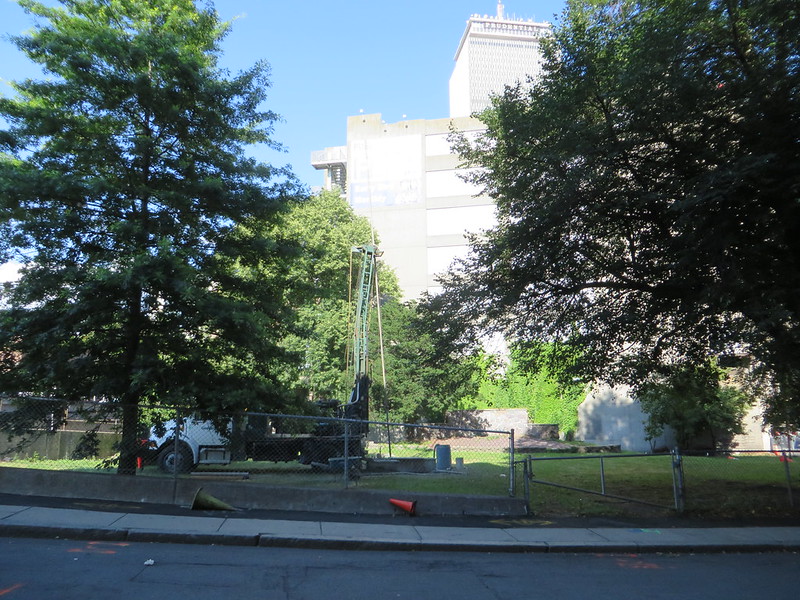Savin Hill
Active Member
- Joined
- Oct 29, 2013
- Messages
- 260
- Reaction score
- 2
Real estate scion aims to build on air
http://www.bostonglobe.com/business...alty-boston/0KZaNA4ZxM5E0Etv0pZrGK/story.html
By Shirley Leung
In this town, Adam Weiner is as close as it gets to real estate royalty.
His father is New England mall baron Stephen Weiner, whose strip malls and shopping meccas ring Boston. His mentor is construction king John Fish, whom he apprenticed with, learning the nuts, bolts, and concrete side of the business. His partner is Steve Samuels, and together they are forming the city’s newest real estate dynasty.
Weiner, 40, has enjoyed a breakout year. His company, Weiner Ventures , has been a significant investor in Samuels’ portfolio of high profile projects, including the Fenway Triangle, the redevelopment of Howard Johnson Inn, and Barry’s Corner in Allston.
You’ll be hearing more from the young developer in 2014 as he chases the Holy Grail of development: air rights. Yes, they are as elusive and ephemeral as they sound. Just ask Arthur Winn, whose Columbus Center never got off the ground, or John Rosenthal, who has spent a decade trying to build Fenway Center.
Even the state, which is in the business of marketing air rights, acknowledges these projects seem impossibly difficult, yet highly coveted because land in prime locations is so scarce.
“To me, it’s like alchemy. I get people to pay millions of dollars for air,” said Jeffrey Simon, the state’s assistant secretary of transportation who oversees real estate projects.
Weiner and Samuels earlier this year won the air rights near the intersection of Boylston Street and Massachusetts Avenue, besting development giants Don Chiofaro and Dick Friedman. They are paying $18 million for a 99-year lease for Parcel 12 and Parcel 15, where they plan to spend $360 million to build a hotel, residences, and shops.
Weiner will take the lead, and the development agreement should be done by the spring. Can he succeed where others have not?
“I have tremendous confidence this is going to be built,” said Simon. “They are very good developers.”
Weiner’s father also believes that and not because it’s his son’s project. Simply put, the elder Weiner said, it comes down to “terra firma.”
Others, he explained, have had to pull off costly engineering feats. Columbus Center, for example, was to be built on over 90 percent air. Only 25 percent of the Parcel 15 project and less than half of the Parcel 12 project will be built in the air.
“Having terra firma,” said Stephen Weiner, “makes it more possible.”
Weiner, 72, has stepped away from hands-on management of his empire, but continues to advise his son. Was Adam destined for the family business?
“I always wanted him to pick what he wanted to do,” said his father. Well, maybe he got a little push. Dad brought a teenage Adam along to visit properties on the weekends.
After graduating from Dartmouth, Adam Weiner got an MBA from Boston University and then did management consulting.
“But he kept coming back to the family issues and the family business,” recalled his father. “Whether it was undue influence or him on his own, I think he wanted to do it.”
A chance meeting with Fish, the head of Suffolk Construction, at a Bruegger’s Bagels in Weston, gave Adam Weiner an opportunity to learn another side of the business. He worked for Fish for about five years, two of them as his right-hand assistant soaking in contracts, budgets, and schedules.
“He is a young man with a lot of resources and high intellectual capacity,” said Fish. “When you couple those talents together, it can be pretty powerful.”
Unlike his father, who made the suburbs his kingdom, Adam Weiner is staking out the city. He has lived in the Back Bay since he was 16, and like any ambitious developer, what drives him is the chance to leave a lasting impression. “You are building a physical connection between you and the city,” said Weiner, who started his firm in 2006.
He met Samuels a few years ago after inking an option to purchase the Howard Johnson on Boylston. Samuels had just started his Fenway renaissance, and Weiner wanted to get to know him. It blossomed into a business partnership. The HoJo’s became a part of Samuels’ portfolio, and Weiner became a big backer.
Together they are trying to break the air rights curse. The last successful project over the turnpike was 30 years ago with Copley Place. And the first one? The not-too-shabby Prudential Center, which opened in 1965.
Adam Weiner may be the heir apparent, and now he’s trying to get us to walk on air.
http://www.bostonglobe.com/business...alty-boston/0KZaNA4ZxM5E0Etv0pZrGK/story.html


